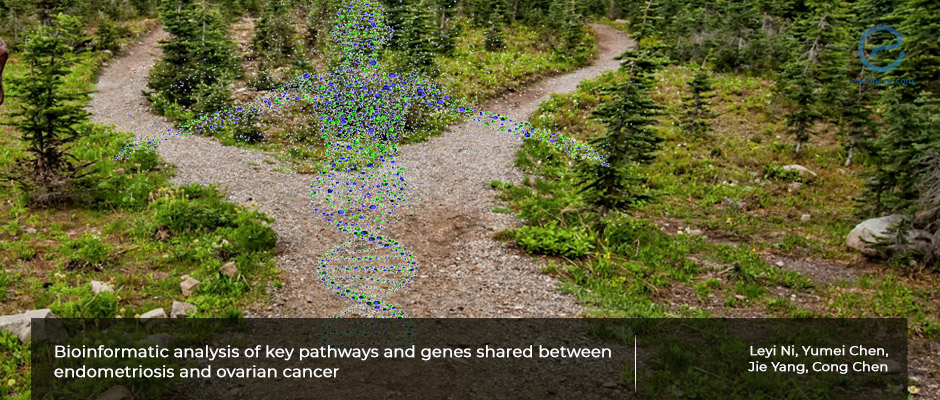What do endometriosis and ovarian cancer have in common?
Feb 2, 2022
The genetic pathways that endometriosis and ovarian cancer share.
Key Points
Highlights:
- The key pathways may elucidate potential biomarkers and the possible mechanisms for ovarian cancer evolution.
Importance:
- The result of the study may help to explain the invasiveness and metastatic properties of endometriosis and lead to new treatment options.
What's done here:
- The keywords for “endometriosis” and “ovarian cancer” were searched in an online dataset for genes.
- Datasets including endometriosis, healthy and ovarian cancer gene data were examined.
- Two datasets merged for the selection criteria, and the differently expressed genes outlined.
- Kaplan Mayer survival analysis has been applied to show the effects of matching genes.
Key Results:
- There were 571 overlapping differentially expressed genes shared between Ovarian cancer and Endometriosis patient samples.
- These genes were primarily associated with processes like cell division, mitotic nuclear division, sister chromatid cohesion, cell adhesion, cell proliferation, positive regulation of cell-substrate adhesion leading to a path for cell division, proliferation, and adhesion.
- The survival analysis showed the downregulation of CCNB1, CCNB2, BUB1B, CCNA2, KIF2C, and TOP2A to be significantly associated with poor survival rates in ovarian cancer.
Limitations:
- The study is a database study comparing different datasets from different nations and backgrounds. This might limit the reliability of results caused by genetic alterations between different populations.
Lay Summary
While endometriosis is not a malignant disease, it is for sure known that it shares genetic disorders with cancers.
In the bioinformatics study applied by Leyi Ni et al, the researchers analyzed the genetic pathways shared by both ovarian cancers and endometriosis to find out the paths showing endometriosis to cancer conversion.
The keywords for “endometriosis” and “ovarian cancer” were searched in an online dataset for genes, named the GEO. Datasets for endometriosis, healthy human and ovarian cancer gene data were examined.
The data have been merged, differently expressed genes have been outlined and the possible pathways explaining the pathways have been explained. Kaplan Mayer survival analysis has been applied to show the effects of matching genes. There were 571 overlapping DEGs shown to be shared between ovarian cancer and endometriosis patient samples.
The results showed that these differentially expressed genes were primarily associated with disease processes such as cell division, mitotic division, sister chromatid cohesion, cell adhesion, cell proliferation, positive regulation of cell-substrate adhesion, proliferation, and adhesion.
The survival analysis showed the downregulation of several genes such as CCNB1, CCNB2, BUB1B, CCNA2, KIF2C, and TOP2A are significantly associated with poor survival rates in ovarian cancer patients.
As the datasets include genetic data from different populations, the results might be interfered with by genetic differences of different nations, but still the results are promising for leading endometriosis to cancer transactions and possible drug designs.
Research Source: https://pubmed.ncbi.nlm.nih.gov/34727222/
bioinformatics ovarian cancer genes Biomarker; Endometriosis; Gene expression; CCN2 mitosis

